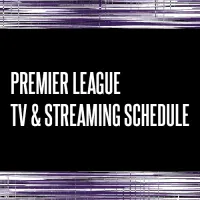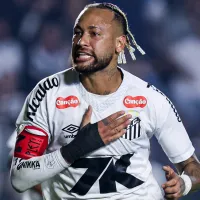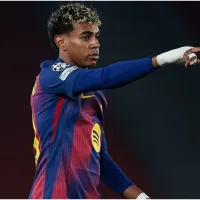
It’s completely unprecedented: a women’s professional soccer league in the United States reaching a fourth season. Not only that, the National Women’s Soccer League hasn’t lost a single founding club in three years and has successfully added an expansion team, with a second on the way. By the time the league begins its fourth season this spring, it will have grown from its original eight clubs to 10. Its two predecessors were closing up shop come year four.
Credit can be attributed to several factors. Fans would probably like to hear that the league’s comparative stability comes from the increasing enjoyment of women’s soccer, and that is definitely part of it. The sport is currently on an upswing, enjoying the benefits of two well-executed, accessible, high-profile World Cups in a row.
But therein lies the problem. The women’s national team is the one moving the needle. NWSL clubs still market heavily around national team players, and with good reason. It’s never been a secret that national teamers would be centerpieces, with both teams and the league hoping fans would then get sucked in and enjoy the rest of the product. And there’s nothing inherently wrong with using that as a strategy; it would be foolish to ignore the star power on hand.
NWSL OFFSEASON QUESTIONS: Time to expand? | How to spark growth?
It the strategy does prompt a few questions: What does the league do if that power diminishes? What if US Soccer decides the NWSL is no longer a suitable partner, stops paying the salaries of most national team players, and stops providing administrative support? Could the NWSL survive without that allocation money? Isn’t that the ultimate goal of the league, to be self-sustaining? Just how long can this partnership between USSF and NWSL last, and how and when should it change?
Considering that national team players in the lowest US women’s salary tier probably still make high five figures while the NWSL’s salary cap per player is $37,800, the league can’t compete with what the federation has established as the players’ value. Fortunately, neither can many other leagues. There are a few clubs in the world that can afford these players; most of them are backed by men’s sides, like Lyon or Paris Saint-Germain. Salaries are decent for top players in Germany, Sweden and (now) England, as well. So without US Soccer in the picture, players who stay in stateside are almost certainly going to accept less money, even if they still get paid by the federation for national team duty. Without US Soccer and Jill Ellis not-so-subtly reminding players that it’s much easier to evaluate talent in NWSL, you could reasonably expect a handful of national teamers like Christen Press to leave for destinations more easterly, settling in Europe and perhaps even Russia or Japan. US Soccer’s involvement keeps these players in the domestic league.
The league could probably withstand losing a few national team players, as long as each club kept at least one. Some of NWSL’s legitimacy as a league stems from the fact that it’s where national teamers play. Is that fair to non-national team players who work just as hard and, in some cases, are just as worthy of a callup? No, But that’s the current reality of NWSL.
What’s more, the NWSL almost could not survive without the agreement that keeps those players in the league. In a world without allocation money—and the rules that spread salary cap relief amongst teams who have fewer allocations—teams wouldn’t just struggle to retain national players; they wouldn’t be able to afford the rest of their roster. Players who are barely making do with $7-10 thousand salaries over six months can’t survive on less.
USSF’s support — and, to a lesser extent, Canada Soccer’s — is crucial. So it behooves the league to keep US Soccer as happy as possible. What does US Soccer want out of NWSL, though? Probably, they’d eventually like it to make some money, but they also want the league to feed back into the national team in terms of player talent and audiences. In an interview with St. Louis United FC, USSF chief executive officer Dan Flynn made it clear that the national team player pool is one of their concerns:
“[Jill Ellis] is bullish. She sees the value. She thinks that we’ve broadened our pool, even in the short term, even in a three-year window.”
Flynn also put a number on just how long-term USSF is willing to be in its support of NWSL.
“We’re not looking for an owner to come in just for three years because they can afford it and they have daughters that play. That’s great if that happens but we want owners that actually believe in what our vision is. I often use the term we’re building a runway for a seven- to ten-year window where that league at the end of that seven to ten years clearly looks a lot different than it does today across all facets of it, from pay scale to TV.”
So USSF has, at least verbally, bought in for at least one more cycle, which will probably carry the league through until after the 2020 Olympics. At that point, NWSL absolutely must transition to the next stage of operation as measured by several growth points.
Consider some basic, useful metrics for NWSL growth: attendance and season ticket holder numbers, the latter an important measure of a club’s core fanbase (in addition to providing often key money upfront). When asked for comment, several NWSL clubs were optimistic about their STHs. The Portland Thorns have already reached a 90% renewal rate, while the Chicago Red Stars have seen incremental increases every season. Even Sky Blue FC, who are perpetually bottom of the league in attendance, expect “momentum will lead to a significant increase in season ticket holders for the upcoming NWSL season,” as per their president and general manager Tony Novo.
Overall attendance has definitely grown, holding fairly steady across seasons one and two and then enjoying a large bump in season three from the World Cup.

We can also look at YouTube viewing numbers, with the league using the platform to stream almost every game over its first three seasons. As per NWSL, here are the total views since the league’s inception:

Views definitely took a dip in the second season but skyrocketed 71.7% in the third season. This mirrors what we saw with attendance and what we can probably expect to see once again after the Olympics. Numbers will gradually level off, only to spike again when the next big tournament arrives.
As part of its next stage of growth, the league needs to retain some of the audience from peak years so that, if numbers do regress after the Olympics, there’s still long-term growth. After that, the goal should be holding steady across seasons, even in non-event years. And finally, the NWSL can target increases from one non-event season to the next, non-event season. At each stage, USSF’s involvement with the league would step down, until NWSL was finally financially independent.
This is not different from what the Women’s United Soccer Association and Women’s Professional Soccer (the NWSL’s two predecessors) probably wanted to see for their numbers. What is unique to NWSL is that, leaving season three, there’s no air of quiet desperation. With USSF’s commitment, a successful World Cup, and the right team owners, the league seems to be laying a solid foundation. We may have to wait until the years after the Olympics to truly see what progress NWSL has made over its predecessors, but it’s telling that there is little doubt we will see those years.
That in and of itself is a brand new benchmark that should change the discussion. I’ts no long whether NWSL will survive. Now it’s about how the league can survive in better, more profitable ways, and how the partnership between the USSF and the NWSL plays its part.














